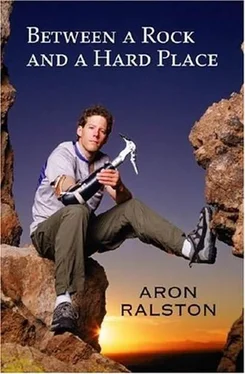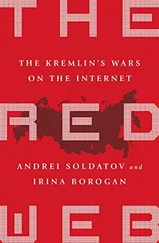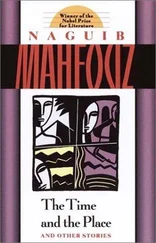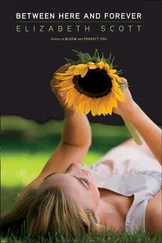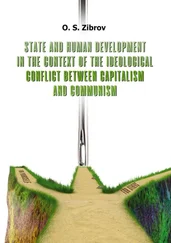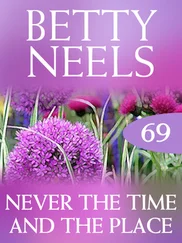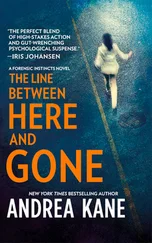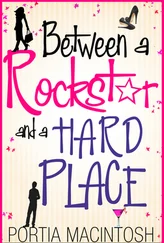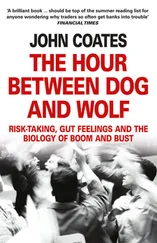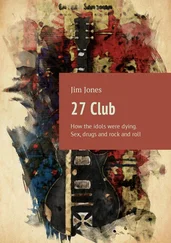Another hour has passed. It’s six P.M. now, a little over three hours since the accident. It’s still warm, but a few degrees off the high temperature of 66 degrees back at three-thirty, according to the watch looped on my left pack strap. I blow some dust off the area I’ve been assailing with my multi-tool and look for any discernible sign of progress. I get my eyes in close to the rock and inspect the mineralized characteristics of my target zone, wondering again if there might be a place with a less durable crystal structure. Considering my negligible progress, the question is more theoretical than practical. The only way I’m going to drill my way free of this stone is if a geologist’s pick magically materializes in my hand.
I feel like I’m in the most deadly prison imaginable. My confinement will be an assuredly short one with only twenty-two ounces of water. The hiker’s minimum for desert travel is one gallon per person per day. I think again about how long I might last on my scant supply-until Monday, maybe, Tuesday morning at the outside. Escape is the only way to survive. In any case, the race is on, and all I have is this chintzy pocketknife to blast my way through this boulder. It’s akin to digging a coalmine with a kid’s sand shovel.
I become suddenly frustrated with the tiresomeness of pecking. My mind runs the analysis on how much rock I’ve chipped away (almost none) and how much time it’s taken me to do it (over two hours), and I come to the easy conclusion that I am engaged in a futile task. As I debate my remaining choices, my stress turns to pessimism. I already know I won’t be successful in an attempt to rig an anchor for a pulley system. The rocks forming the ledge are six feet above my head and almost ten feet away; even with two hands, that would be an impossible chore. Without enough water to wait for rescue, without a pick to crack the boulder, without an anchor, I have only one possible course of action.
I speak slowly out loud. “You’re gonna have to cut your arm off.” Hearing the words makes my instincts and emotions revolt. My vocal cords tense, and my voice changes octaves.
“But I don’t wanna cut my arm off!”
“Aron, you’re gonna have to cut your arm off.” I realize I’m arguing with myself and yield to a halfhearted chuckle. This is crazy.
I know that I could never saw through my arm bones with the blunted knife, so I decide to keep trying to free myself by pecking away at the boulder. It’s futile, but it’s the best of my current options. As I hit the rock, I imagine the early evening sun projecting ever longer shadows across the desert. The blue of the sky deepens while I carve unproductively for the next hour, taking infrequent and brief breaks. My understanding of the engraving above my right arm, “Geologic Time Includes Now,” changes from Gerry Roach’s intended warning to a spur of motivation. It becomes a hopeful reminder that, like an agent of geologic time, I can erode this chockstone, perhaps enough to free my hand from the obdurate handshake of the sandstone block. However, the stone has rapidly dulled my knife. I reconfigure the tool to expose the file again, and continue sawing down along the line I’ve etched above the grayish bulge at the near edge of the concavity.
While I’m filing, I think about the first time I visited Utah. I’m not sure what brings it to mind. Perhaps it’s in response to the nagging question of how did I get here, how did I end up stuck in this place? That first trip was with my family on spring break in 1990, my freshman year in high school. We went to Capitol Reef, Bryce Canyon, and Zion Canyon before swinging south to the Grand Canyon. I wasn’t that thrilled by the idea. The weeks before we left, all my friends were excited for their skiing trips or vacations to Mexico. Me? I was going to Utah with my parents.
Fortunately, our family friend Betty Darr from Ohio was with us. She was the most well-read person I’d ever known, and her passion for reading was surpassed only by her love for the outdoors-two qualities that make for an excellent traveling companion. She was also one of the most positive, insightful, and caring people I’ve ever had the pleasure to call my friend. Betty had contracted polio when she was a little girl in the 1930s, and it paralyzed her from the waist down. I don’t know if it was because of her battle against polio that she was so positive, or whether it was because she was so positive-minded that she overcame the challenges posed by her paralysis, but Betty found the light and good in every person, and she loved everyone. She spent several days a week volunteering at the county jail, where she helped prisoners learn to read and write, bringing them her magazines and working with them one-on-one. Her humanity saw in them their potential; nothing else mattered.
Betty had used arm crutches and a total leg-and-back brace every day since the polio, though sometimes she scooted around her rural Ohio house on her behind, dragging her legs and using her arms and hands to propel herself backward. She had a specially outfitted car that she could drive using hand controls. While we were visiting the national parks, she used an electric wheelchair to get around-she called it her Pony-or else my dad would carry her ninety-pound frame to the nearer spots that didn’t necessitate the Pony. Sometimes, when Betty drove her Pony, she encountered hills too steep for its electric motor. My sister and I fought over who got to help push Betty. At Bryce Canyon, I won and was pushing Betty in her Pony up the final hill to the lookout. With my arms outstretched and head level with my shoulders, I was staring down at the battery tray under the chair when I heard Betty exclaim, “Oh, look at this, Aron!”
I looked up and almost let go of her. We were at a sweeping vista encompassing hundreds of orange and pink sandstone towers filling a three-hundred-foot-deep canyon that plunged directly in front of us and stretched for a half mile to either side of the lookout. I was stunned, and can trace my fascination for canyons back to the emotions I felt at that viewpoint. I wanted to race down into the canyon, touch the towers that seemed like they would topple at any moment, and follow every path that laced around the formations until I became lost in the maze. I imagined myself standing atop the tower called Thor’s Hammer, and then, with superhuman ability, bounding to the top of the next pinnacle, and from there to the next. When it was time to go, I left with an empty feeling in my soul. At fourteen, I didn’t understand why I felt this way, but I had met a calling in my life, though it would remain unfulfilled for a long time.
Two days later in the trip, we arrived at the Grand Canyon after dark and checked in to our room at the lodge. We got up at five-thirty in the morning to watch the sunrise from the South Rim. Since we’d come in at night, I hadn’t seen the canyon itself yet, so I was grumbling, “Why do we have to do this?” It was cold, and I hated having to get up so early. We took the comforters from our beds in the hotel room and loaded the five of us into the minivan for the five-minute drive west to the overlook. I tried my best to fall back asleep in the backseat, and I almost managed to convince my dad to let me stay in the van while everyone else went to the guardrail. But Betty won me over with her subtle encouragement: “We’ll be right over at the benches when you’re ready to see the sunrise.” My mom and sister took the comforters while my dad carried Betty over to the viewpoint. Without the van heaters on, I got chilled in just a few minutes, so I walked over to my family and crawled under the blankets next to my sister.
I had never before sat and watched a sunrise for the sake of it, and I wasn’t at all prepared for how majestic it would be. There stood forty miles of the mile-deep, fifteen-mile-wide wonder of the Grand Canyon, running from our toe tips to the growing horizontal rainbow at the horizon. The rock strata of the inner canyon changed from dark umbers and black shadows to immense bands of pastel yellow, white, green, and a hundred shades of red in the mysterious chemistry of twilight. At last, a blazing crescent burst over the distant desert palisades at the epicenter of the rainbow, and the canyon exploded in an array of dozens of temples, buttes, gorges, and pyramids, brought into glowing contrast with the encompassing canyon walls by the sunrise’s glowing rose-colored light.
Читать дальше
